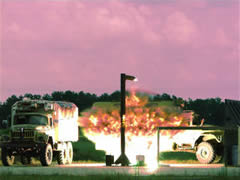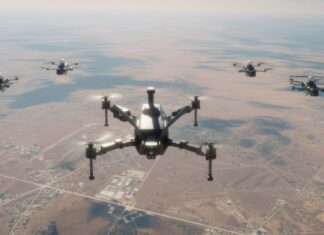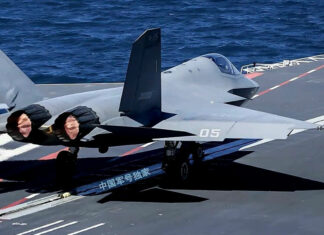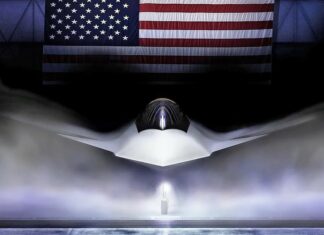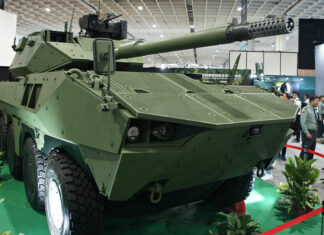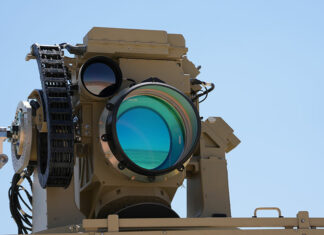Krauss-Maffei Wegmann (KMW) has unveiled a new, medium weight highly protected vehicle called Grizzly, designed for operation with the German Army. KMW is developing the vehicle under the German Ministry of Defense technology and procurement agency (Bundesamt für Wehrtechnik und Beschaffung – BWB). The “Grizzly” offers the crew optimum protection, especially against explosive devices, mines and small arms direct fire. The first vehicle will be delivered as early as November 2007.
Grizzly is designed to meet the German Army’s “Class 4” protected command and role-specific vehicles, with a gross vehicle weight of 25 tons. So far the German Army could use only a smaller platform – the Dingo 2 (12.5 tons) or the much heavier 33-ton BOXER. The vehicle is sized to be air transportable on the A 400 M transport aircraft.
Grizzly can carry 10 fully equipped troops, exceeding by more than 50% the 3 tons required in the German request for proposal (RFP). The vehicle is protected in all directions. The driver´s station and crew compartment form an integral safety cell providing protection against improvised explosive devices (IEDs), projectiles, missiles and mines. The cell’s frame also forms a cage which contributes to the crew safety in case of rollover. The engine compartment and transmission are ballistically protected to reduce the risk of ‘mobility kill’ under attack.
The vehicle uses a diesel engine developing 331 kW, accelerating the Grizzly up to a speed of 90 kph on road. Its radius of action exceeds 700 km. KMW is offering the vehicle in several configurations, including command post and ambulance variants. The design is based on an intelligent modular concept which, beside the current 6×6 version, could also accommodate a smaller 4×4 model as well as an 8×8 type of correspondingly higher payload.

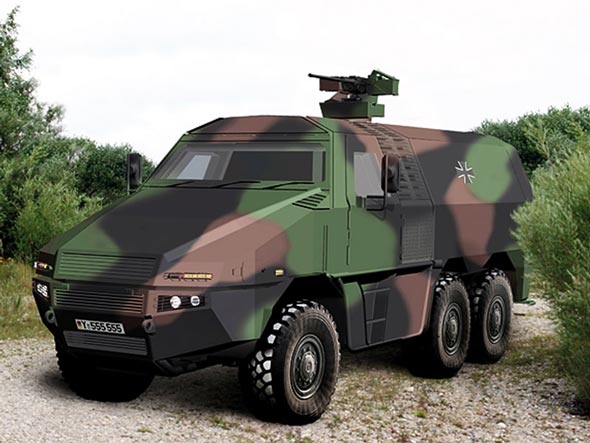
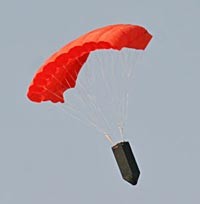



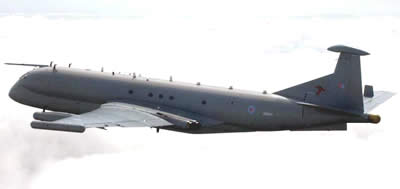
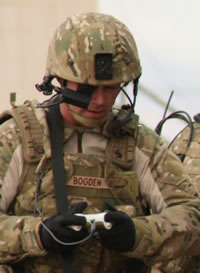

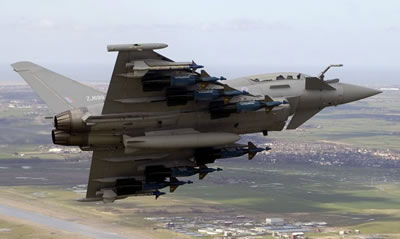




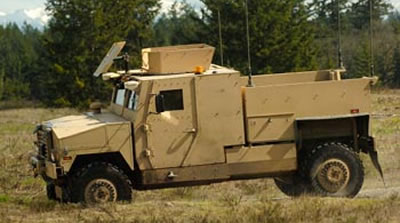


 Armor Holdings developed the Maneuver Sustainment Vehicle (MSV) comprising a hybrid electric drive that can deliver up to 30 kilowatts of exportable power. Each wheel is powered by a new 120kW electrical motor made by UQM. The vehicle is also equipped with a fully robotic crane that can lift 13 tons of cargo and remotely operated weapon station.
Armor Holdings developed the Maneuver Sustainment Vehicle (MSV) comprising a hybrid electric drive that can deliver up to 30 kilowatts of exportable power. Each wheel is powered by a new 120kW electrical motor made by UQM. The vehicle is also equipped with a fully robotic crane that can lift 13 tons of cargo and remotely operated weapon station.